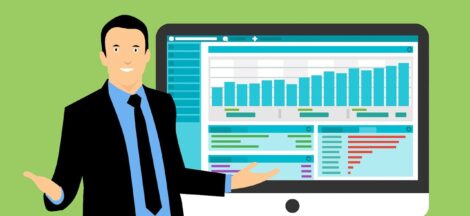On Friday, May 15, The Small Business Administration (SBA) posted the Paycheck Protection Program Loan Forgiveness Program application, an 11-page document that business owners must complete to have their Paycheck Protection Program (PPP) loans forgiven.
Then, on Friday, May 22, the Treasury Department released a New Interim Final Rule (Interim Final Rule), which provides further guidance on PPP loan administration and forgiveness.
Business owners should review and understand both the loan forgiveness application and the Interim Final Rule to ensure they gain the full benefit of PPP loan forgiveness.
The Paycheck Protection Program
The PPP — signed into law by President Trump on March 27 as part of the Coronavirus Aid, Relief, and Economic Security Act — is a $349 million program providing loans to qualifying small businesses. Companies are eligible to receive PPP loans of up to 2.5 times their monthly payroll costs, based on historical averages. The SBA distributes PPP loans on a first-come, first-served basis, and each business is subject to a cap of $10 million.
The first step is to find an approved PPP lender and apply for a PPP loan. Then, after businesses use PPP funds to make qualifying expenses, they can apply for loan forgiveness.
The PPP Loan Forgiveness Program Application
The application for PPP loan forgiveness has four main parts:
-
PPP Loan Forgiveness Calculation Form
-
PPP Schedule A
-
PPP Schedule A Worksheet
-
PPP Borrower Demographic Identification Form (optional)
Additionally, the application provides a list of documents that businesses must submit with the official application forms.
PPP Loan Forgiveness Calculation Form
The PPP Loan Forgiveness Calculation Form requires businesses to provide information such as their PPP loan amount, number of employees, and expenses they made using PPP funds.
Payroll Costs in the “Covered Period”
The instructions explain that PPP borrowers are eligible for loan forgiveness if they use loan proceeds to make payroll expenses during a 56-day “covered period.” Each borrower’s covered period begins once it receives its PPP loan proceeds.
Payroll expenses a business incurs — but doesn’t pay — during its covered are still eligible for forgiveness if the business pays employees on the business’s regular payroll date.
For example, if a company accrues $10,000 in payroll expenses in the last week of its covered period but payday isn’t until the following Friday, the company can still apply for $10,000 in loan proceeds to be forgiven if it pays its employees using PPP loan money by the next Friday.
Limits on Payroll Costs
According to the application’s instructions, payroll expenses eligible for forgiveness cannot exceed a prorated salary of $100,0000 for each employee. In practice, this limits employers to $15,385 of forgivable payroll expenses per employee during the eight-week covered period.
Eligible Non-Payroll Costs
The application instructions also clarify that the following expenses may be eligible for forgiveness:
-
Mortgage obligations, including interest payments but excluding prepayments or principal payments. Obligations must have been incurred before February 15, 2020.
-
Rent payments, including leases for real or personal property which began prior to February 15, 2020.
-
Utility payments, including electricity, gas, water, transportation, telephone, or internet bills. Service must have started before February 15, 2020.
To qualify for PPP loan forgiveness, businesses must pay these non-payroll expenses either during the covered period or by the next regular billing date. Importantly, non-payroll costs cannot exceed 25% of the total PPP loan forgiveness amount.
Borrower Certification
As part of the application, borrowers must make the following certifications, among others:
-
The borrower used loan proceeds for permissible purposes within the prescribed limits.
-
If the borrower used loan proceeds improperly, it might be subject or civil or criminal penalties.
-
The borrower has verified all payroll and non-payroll expenses for which the borrower is requesting forgiveness.
-
The borrower submitted all relevant supporting documents to its lender.
-
The information provided is true and correct.
As part of the certification, the borrower must acknowledge that the SBA may decline loan forgiveness if it determines that the borrower was ineligible to receive the PPP loan.
PPP Schedule A
PPP Schedule A requires businesses to include information regarding expenses made pursuant to medical insurance policies, retirement plans, and tax obligations. Companies must also identify whether they have reduced their number of full-time employees between January 1 and the end of their applicable covered period.
PPP Schedule A Worksheet
Businesses should use the Schedule A Worksheet to track employees, their compensation, and any reduction in the business’s number of full-time workers. In some cases, PPP borrowers might not have 100% of their loans forgiven if they reduced workers’ salaries or wages by more than 25% or laid off full-time employees.
However, the instructions to the Schedule A Worksheet set forth a safe harbor. Under the safe harbor, borrowers will be exempt from a reduction of loan forgiveness if they cut full-time employment between February 15 and April 26 but then restored full-time employment by June 30.
Additionally, employees who have been given a good-faith offer to be rehired or who were fired for cause, voluntarily resigned, or requested a reduction in hours will not reduce a business’s eligibility for PPP loan forgiveness.
Voluntary PPP Borrower Demographic Identification Form
Borrowers may provide optional information regarding the business’s owners, including classifications based on race, gender, veteran status, and ethnicity.
Supporting Documentation
The application also describes a list of documents businesses must submit alongside the required forms, including bank account statements, tax documents, and payment receipts. For a full list of required supporting documents, review page 10 of the application.
The May 22 New Interim Final Rule
The Interim Final Rule, released by the Treasury Department last Friday, clarifies various aspects of PPP loan forgiveness.
Qualifying Payroll Expenses
According to the Interim Final Rule, the following qualify as forgivable payroll expenses:
-
Salary, wages, and commissions
-
Payments for vacation, medical, and family leave
-
Severance payments
-
Payments for employee benefits, including health insurance and retirement
-
Tax payments and assessments
Interestingly, tips are also included as forgivable payroll expenses, even though tips are paid by customers, not employers.
The Interim Final Rule clarifies that payments to furloughed employees, bonuses, and hazard pay all qualify as forgivable payroll expenses, so long as they don’t exceed the $15,385 per-employee limit.
Timing of Non-Payroll Expenses
The Interim Final Rule clearly states that forgivable non-payroll expenses include those which are paid during the covered period or incurred during the covered period and paid on or before the next regular billing date, even if the billing date is after the covered period.
Importantly, this means that interest, rent, and utility balances accrued before the covered period can still qualify as covered expenses. For example, if a business had $2,000 in overdue rent that was payable before its covered period began, paying off the $2,000 would be a qualifying expense.
However, companies should always make sure their non-payroll costs don’t exceed 25% of their total forgivable PPP loan amount.
Self-Employed Entrepreneurs
Unfortunately for self-employed entrepreneurs — such as those operating an LLC or partnership — the Interim Final Rule excludes payments for retirement programs or health insurance made by self-employed individuals or general partners. This ruling stands in contrast to health insurance and retirement payments made by traditional companies, which count as forgivable payroll expenses.
Further Information on PPP Loan Forgiveness
For more guidance on the specifics of PPP loan forgiveness, review the full text of the 26-page Interim Final Rule.





